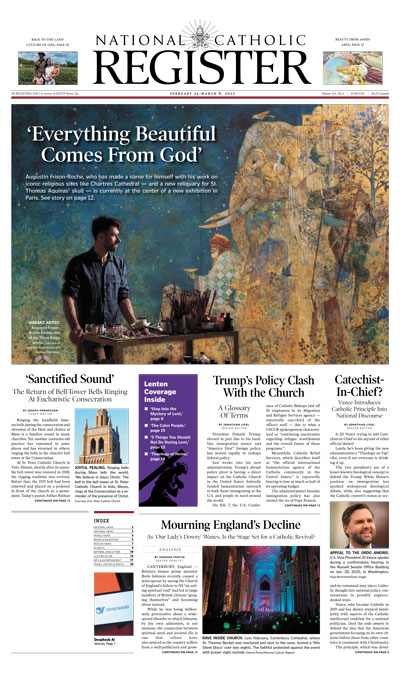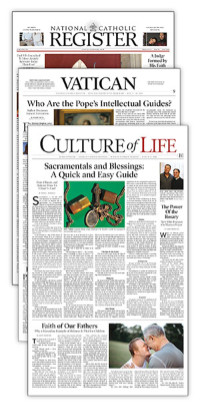‘We Crown Thee With Blossoms’: The Mary Garden and Gift of Sacrificial Beauty
THEOLOGY OF HOME: It is in the month of May that the visuals of the garden shift entirely.

The land is an inheritance. Since mankind first drew breath in Eden, the garden was placed into his care to cultivate and hand on to the next generation. A life on the land unsurprisingly reflects the spiritual life, as we were made for the garden. As I have written in Theology of Home IV: Arranging the Seasons, the beauty of God’s created order within the seasons informs the spiritual life. As each season comes to a close, giving way to the next, my understanding of this reality deepens.
When matters of life are rightly ordered, the beauty and importance of God’s created order are apparent, and, in turn, we comprehend the necessity of our participation. Nature is a unique means through which God’s fingerprint is recognized and his creatures encounter him. Since the dawn of time, the garden has been a common backdrop of man’s relationship with God. As the recent readings of the Easter Octave remind the faithful, this is the setting where St. Mary Magdalene meets the Risen Lord, mistaking him for a gardener.
God always meets us in the garden.
As the modern world consists of residing in a sphere clearly built by man, the great expanses created by God, and unchanged by man, are powerful to encounter. In these places, man beholds both his smallness and his dependence upon God. The garden is a bridge between those two realms, the place of cooperation first prescribed to Adam to cultivate and steward, ultimately as the source of sustenance and life for both man and beast. From the bountiful sustenance of the land comes the temptation of solely maintaining a viewpoint of productivity and not of gift.
The battle between utility and beauty persists through the ages and aspects of life. It is most perceived within architecture, but is also rife in the stewardship of the land. As the ownership of land can be limited, there is a great temptation to utilize every square inch of productive land toward something of measurable benefit: pasture to raise animals who convert grass to meat and milk or arable land to plant crops for harvest. Sometimes in the homesteading life, for example, all of the emphasis is placed on providing sustenance for the family and not upon planting a garden of beauty. Similarly, within a suburban setting, the temptation is extremely strong to keep as much of the land for a manicured lawn. The balcony of an apartment serves as an even greater example of scarcity due to its finite measure of space. Yet there is a meaningful opportunity for faith and devotion in setting aside a piece of our land — our inheritance — for God, no matter the portion. And, as it is the month of May, an example of this is found in the planting of a Mary garden.
Setting aside space that would be otherwise “productive” is an opportunity for sacrificial beauty. The offering of our inheritance to the Lord facilitates cooperation with divine Providence, as the preoccupation with utility and productivity often leads to self-reliance. On the other hand, tithing a section of our land for a garden of veneration serves as a reminder that God will provide for our material needs, serving as an antidote to self-reliance. Through the imitation of Christ’s ultimate sacrifice, a deeper beauty is achieved in the garden and in our souls.
Moreover, sacrificial beauty provides a space within for an invitation to relationship, in the diminishing of the ego and increasing focus on the other. A paradox exists within the worker's submission to beauty. Often, the toils of a creative work bear marvelous fruit. With it comes a caveat: It cannot be an end unto itself. There is no end to achieve in beauty, only contemplation. The creative life of beauty is dependent upon our likeness to God the Father and trust in him, as it is often an act of sacrifice. Archbishop Fulton Sheen said that “Judas knew the cost of everything and the value of nothing.” Through utility we recognize the cost of something, however beauty aids in the contemplation of value. Sacrificing a portion of our inheritance to venerate the pinnacle of creation is appropriate, as the life of the Mother of God is the perfect human example of sacrificial beauty.
It is in the month of May that the visuals of the garden shift entirely.
Creation has fully come back to life after its winter rest, so there is no more fitting time to venerate the Mother of God. A Mary garden is a topic familiar to Catholics, as a breadth of information on the practical creation of a Mary garden is easily found. The discussion of it as a necessary part in the shaping of a Catholic home culture is not as prevalent. The garden is important to interior life, as the garden is an integral backdrop of salvation history. The fruits of the garden nourish but, through flowers, delight. God created a beautiful garden for us to reside with him as a gift. Acknowledging this gift in offering back to the Lord unites faith with creation and affords deep contemplation.
The close linkage between Our Lady and flowers makes it easy to design a Mary garden. Over the centuries, the cultivation of flowers has become deeply connected to Our Lady, as many blooms were named for her. The title of “Our Lady’s” preceded the contemporary names of many flowers: Our Lady’s Mantle, Mary’s Gold (marigold), Our Lady’s Thistle, Our Lady’s Glove (foxglove), as well as many more.

Intertwined within the Litany of the Blessed Virgin Mary is the acknowledgement of her as the “Mystical Rose,” for she is the perfect bloom in the garden of souls.
Nurturing a garden for the “new Eve” is a beautiful offering of our inheritance and stewardship appointed to man in Genesis. Our interior life is cultivated alongside the garden in this active participation of sacrificial beauty. As we create an outward sign of internal devotion, we revalue the gift of our inheritance and cultivate a beautiful space in which to encounter the Author of all creation.
Bring flow’rs of the fairest / Bring flow’rs of the rarest / From garden and woodland and hillside and vale; Our full hearts are swelling / Our glad voices telling / The praise of the loveliest rose of the vale.
O Mary! We crown thee with blossoms today / Queen of the Angels, Queen of the May.
















